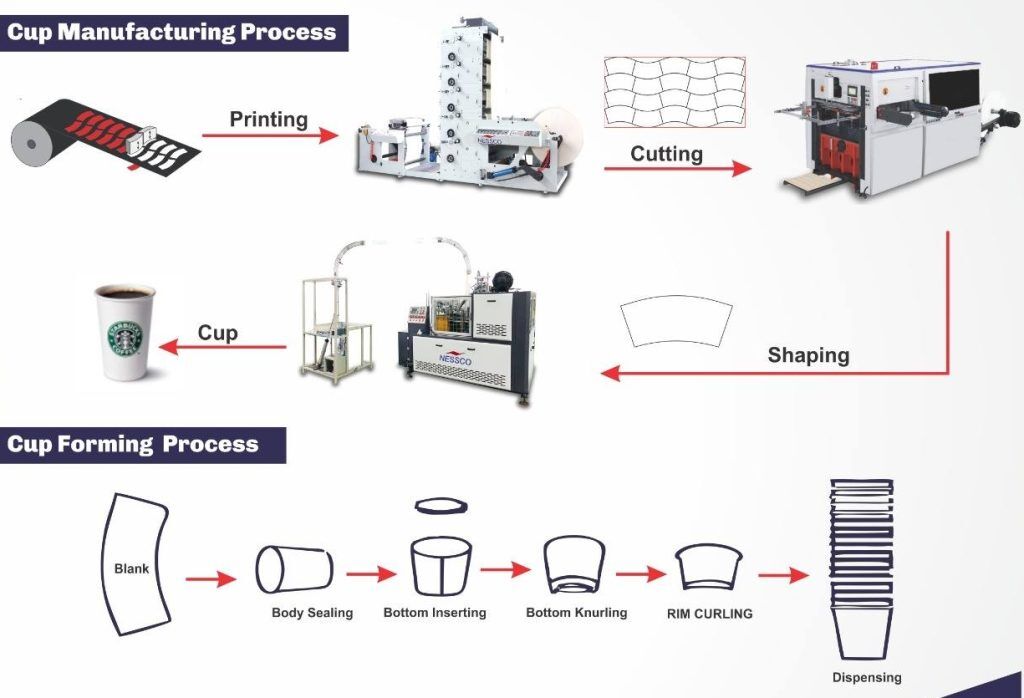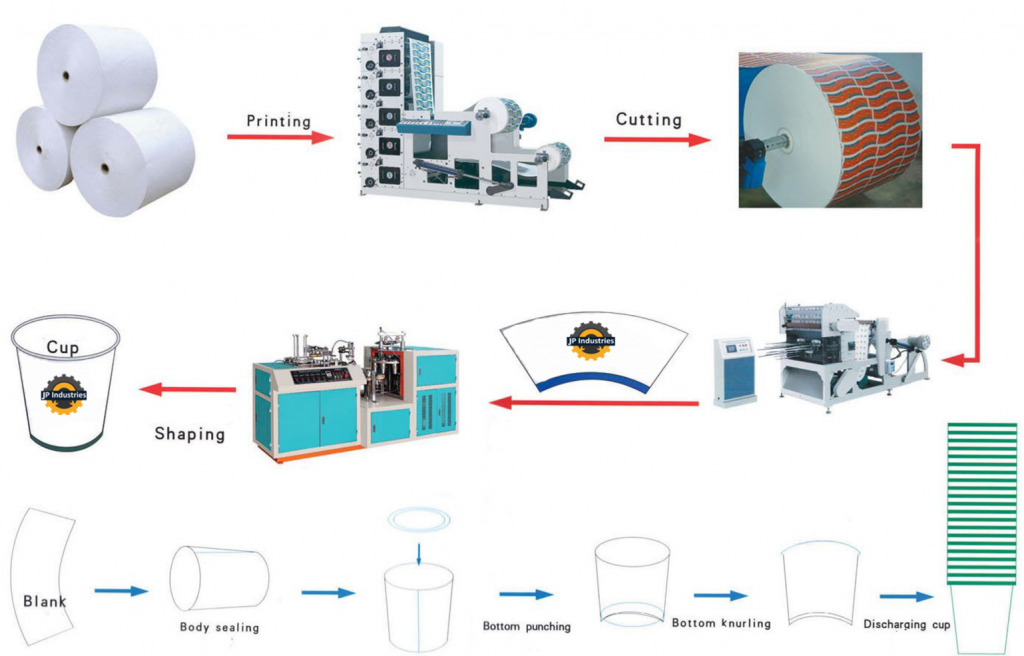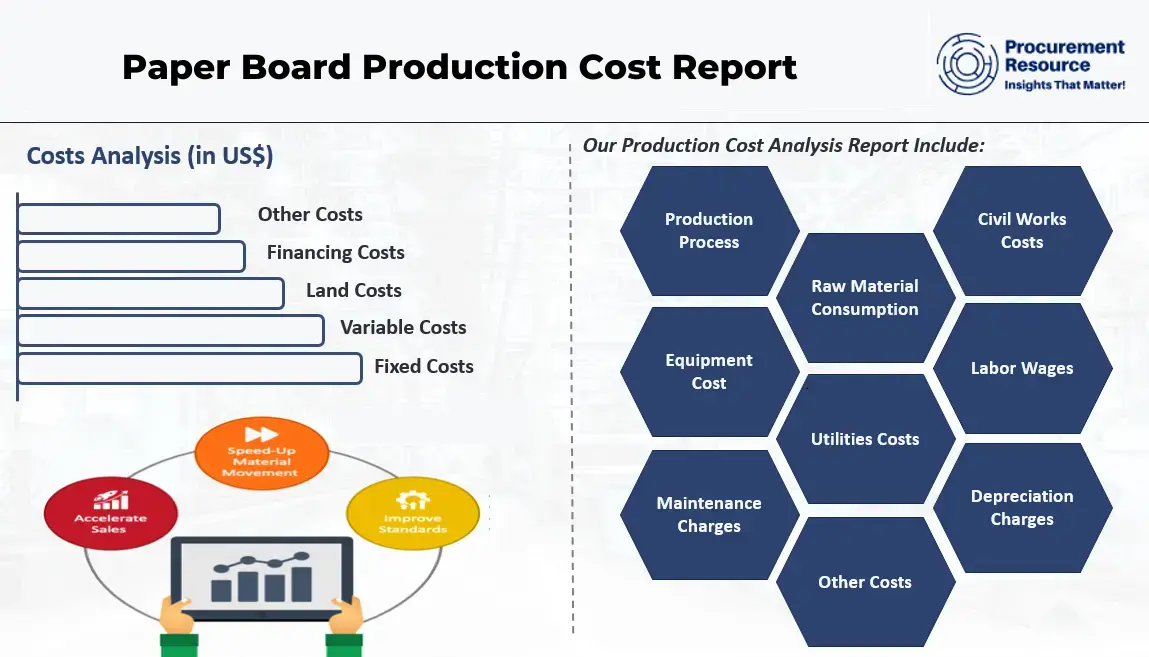Are Paper Cup Manufacturing Standards Eco-Friendly?
Section 1: Understanding Industry Standards and Compliance Regulations
In the competitive industry of paper cup manufacturing, adhering to industry standards and compliance regulations is crucial to ensure the production of safe and high-quality products. This section will provide an in-depth guide to understanding the key industry standards, how manufacturers ensure compliance, and the quality control measures typically implemented in the production process.
What are the key industry standards for paper cup manufacturing?
Paper cup manufacturing is subject to various industry standards to ensure the safety and quality of the final product. One of the most important standards is the food-grade certification, which ensures that the materials used in the production of paper cups are safe for direct contact with food. Two widely recognized certifications in this regard are the Forest Stewardship Council (FSC) and the Programme for the Endorsement of Forest Certification (PEFC), which guarantee that the paperboard used in the cups comes from responsibly managed forests or recycled sources.
Another significant standard is the leak-proofness of paper cups. This is achieved through the application of a plastic coating, typically made of polyethylene (PE), on the inner surface of the cup. The coating prevents liquid seepage and ensures that the cup can hold hot and cold beverages without leakage.
Additionally, there are standards related to the printing of paper cups. The inks used for printing must be food-grade and adhere to specific regulations to ensure safety. The printing process itself should be done with precision to ensure that the designs are clear and do not fade or peel off during use.
How do manufacturers ensure compliance with regulations in paper cup production?
To ensure compliance with regulations, manufacturers of paper cups follow a series of rigorous processes and checks throughout the production cycle. This begins with the sourcing of raw materials. Manufacturers prioritize using eco-friendly materials, such as paperboard sourced from sustainably managed forests or recycled paper materials. By choosing responsible sourcing methods, manufacturers can meet the standards set by organizations like FSC and PEFC, ensuring the use of sustainable materials.
Once the raw materials are selected, manufacturers must carefully handle them in accordance with regulatory guidelines. This involves cleaning, transforming the materials into pulp, and bleaching them to achieve the desired whiteness or color. The entire process is conducted with utmost care to maintain the quality and safety of the materials.
During the cup-forming process, manufacturers employ advanced machinery and techniques to ensure accurate and precise cup dimensions. The folding, sealing, and shaping of the cup blanks are carefully executed, ensuring strong and well-sealed cups. Coating the cups with a plastic layer for leak-proofing is done with precision to prevent any compromise in quality or safety.
Throughout the production process, manufacturers perform regular and comprehensive quality control checks. These checks involve testing the cups for leak-proofness, ensuring that they can withstand the rigors of handling hot liquids without any leakage. In addition to this, manufacturers conduct pre-shipment inspections to evaluate the cups for safety, functionality, and aesthetic appeal. These measures help manufacturers maintain compliance with industry standards and regulations.
What quality control measures are typically implemented in the production process?
Quality control is critical in paper cup manufacturing to ensure that the final product meets the necessary standards for safety, functionality, and overall quality. Manufacturers implement various measures to achieve this.
One of the key quality control measures is testing the cups for leakage. Cups are filled with hot liquids and subjected to rigorous checks to ensure that they remain leak-proof. This ensures that customers can use the cups without any concerns about unexpected leaks.
In addition to leak tests, manufacturers also conduct inspections during the various stages of production. Raw materials are thoroughly inspected to ensure their quality and conformity to industry standards. Throughout the cup-forming process, visual inspections are carried out to detect any defects or imperfections in the cups. These inspections include checking for correct cup dimensions, accurate folding and sealing, and the absence of any visual flaws.
Furthermore, manufacturers often employ automated quality control systems that utilize machine vision and artificial intelligence. These systems can detect even minor defects or irregularities that may be missed by human inspectors. By using advanced technology, manufacturers can ensure a high level of consistency and precision in the production process.
In summary, understanding and maintaining industry standards and compliance regulations are crucial aspects of paper cup manufacturing. By adhering to these standards, manufacturers can produce safe, high-quality cups that meet customer expectations. Through careful material selection, precise production processes, and comprehensive quality control measures, manufacturers can ensure that their paper cups are not only compliant but also contribute to a sustainable and eco-friendly future.
Section 2: Materials and Production Processes in Paper Cup Manufacturing
In this section, we will delve into the materials commonly used in paper cup manufacturing, the key steps involved in the production process, and the role of eco-friendly practices in modern paper cup manufacturing.
What are the common materials used in paper cup manufacturing?
Paper cups are typically made from food-grade paperboard sourced from sustainable forests. The paperboard used in the production of paper cups is carefully chosen to ensure it meets the required standards for strength, durability, and suitability for food contact.
The manufacturing process begins with the sourcing of eco-friendly materials such as wood-derived food-grade paperboard from sustainably managed forests or recycled paper materials. These materials are chosen to minimize the environmental impact of the manufacturing process and ensure the safety of the end product.
Can you explain the key steps in the production process of paper cups?
The production process of paper cups involves several key steps, including material selection, shaping and forming, coating, printing, and quality control.
- Material Selection: The first step in the production process is the selection of high-quality paperboard. The paperboard undergoes cleaning, transforming into pulp, and bleaching for desired whiteness or color.
- Shaping and Forming: After the paperboard is prepared, it is cut into cup blanks of the desired size. Cup-forming machines are then used to shape the cup blanks into cups by gluing paper circles and applying heat and pressure. To ensure leak prevention, a thin layer of polyethene (PE) coating is applied to the cups.
- Coating: The cups undergo a coating process where a thin layer of polyethene (PE) or biodegradable PLA coating is applied on the inner surface of the cups. This coating prevents liquid seepage and ensures the cups remain leak-proof.
- Printing: Once the cups are formed and coated, they are ready for printing. Flexographic or offset printing techniques are used to apply designs, logos, or graphics using food-grade inks. This adds branding and visual appeal to the cups.
- Quality Control: Rigorous quality control measures are implemented at various stages of the production process. This includes inspecting raw materials, monitoring production processes, conducting leakage checks with hot liquids, and performing pre-shipment inspections for safety, function, and aesthetic evaluation.
How do eco-friendly practices play a role in modern paper cup manufacturing?
In recent years, there has been a growing emphasis on eco-friendly practices in paper cup manufacturing. Manufacturers are actively seeking ways to reduce the environmental impact of their operations and make their products more sustainable.
One of the key eco-friendly practices in paper cup manufacturing is the use of biodegradable materials. For example, plant-based PLA linings are being employed as an alternative to traditional polyethene (PE) coatings. PLA is derived from renewable sources and is biodegradable, making it a more environmentally friendly option.
Furthermore, manufacturers are adopting CO2 neutral processes, which aim to minimize carbon emissions and reduce the overall environmental footprint of the production process. By using energy-efficient machinery and sustainable raw materials, manufacturers can significantly reduce their impact on the environment.
Innovations in materials and production techniques are also contributing to eco-friendly practices in paper cup manufacturing. For instance, the use of recycled materials in the production of paper cups helps reduce waste and conserve natural resources.
Manufacturers are also implementing quality control measures to ensure that their products meet environmental and safety standards. By conducting rigorous inspections and adhering to strict regulations, manufacturers can ensure that their paper cups are safe for use and have a minimal impact on the environment.
In conclusion, the materials used in paper cup manufacturing, the production processes involved, and the adoption of eco-friendly practices all play important roles in ensuring the production of high-quality, sustainable paper cups. By selecting eco-friendly materials, implementing efficient production processes, and adhering to stringent quality control measures, manufacturers can contribute to a greener future while providing consumers with safe and reliable paper cups.
Quality Control and Innovation in Paper Cup Production
Quality control is a crucial aspect of paper cup manufacturing to ensure that the products meet the necessary standards and requirements. It involves a series of measures and tests to maintain consistency, durability, and safety. In addition to quality control, the industry is also witnessing innovations in materials and processes to make paper cup manufacturing more sustainable and eco-friendly.
Ensuring Quality in Paper Cup Production
To ensure the quality of paper cups during production, manufacturers implement several measures and tests. These include:
- Raw Material Inspection: The first step in quality control is inspecting the raw materials used in paper cup production. This includes checking the quality of paperboard, adhesives, and coating agents like wax, polyethylene (PE), or silicone. The raw materials should meet the necessary standards and should be sourced responsibly.
- Production Process Monitoring: Manufacturers closely monitor the production process to ensure that cups are manufactured according to the required specifications. This involves checking machine settings, temperature, pressure, and other variables that affect cup formation and quality.
- Visual Inspections: Visual inspections are carried out to identify any defects or imperfections in the cups. This includes checking for uneven coatings, misshapen cups, or any printing errors.
- Leakage Tests: Leakage tests are conducted to ensure that the cups are leak-proof. Cups are filled with hot liquids and checked for any signs of leakage. This test is essential to ensure that the cups can safely hold hot beverages without any spillage.
- Aesthetic Evaluation: Paper cups are also evaluated for their visual appeal. This includes checking for color consistency, printing quality, and overall appearance. Cups should comply with branding and design requirements.
- Pre-shipment Inspections: Before the cups are packaged and shipped, a final inspection is carried out to ensure that they meet the quality standards. This includes checking the overall quality, function, safety, and aesthetics of the cups.
By implementing these measures, manufacturers can ensure that the paper cups produced are of high quality, safe to use, and meet the required standards.
Innovations in Paper Cup Manufacturing
In recent years, there have been significant innovations in paper cup manufacturing to make the process more sustainable and eco-friendly. These innovations include the use of innovative materials and greener manufacturing processes:
- Sustainable Materials: Manufacturers are exploring the use of innovative materials for paper cup production, with a focus on sustainability. One such material is plant-based Polylactic acid (PLA), which is derived from renewable sources like cornstarch. PLA can be used as a coating material and offers an eco-friendly alternative to traditional plastic coatings. It is biodegradable and reduces the environmental impact of paper cup production.
- Recycled Materials: Another eco-friendly approach is the use of recycled materials in paper cup manufacturing. By using recycled paperboard and other recycled materials, manufacturers can reduce the demand for new materials and minimize waste.
- CO2 Neutral Processes: Some manufacturers are adopting CO2 neutral processes for paper cup production. These processes aim to offset the carbon emissions generated during manufacturing, making the overall production process more environmentally friendly.
- Efficiency Improvements: Innovations in machinery and automation have improved the efficiency and productivity of paper cup manufacturing. Improved machines and processes reduce waste, energy consumption, and optimize production cycles. This leads to a more sustainable and cost-effective manufacturing process.
By incorporating these innovations, manufacturers can produce paper cups that are not only of high quality but also environmentally friendly and sustainable.
Contribution to Sustainability
Quality control plays a vital role in the overall sustainability of paper cup production. By ensuring that cups meet the required quality standards, manufacturers reduce the likelihood of product defects, failures, and wastage. Cups that meet the necessary quality criteria are less likely to be discarded or rejected, minimizing waste in the production process.
Additionally, the use of sustainable materials and greener manufacturing processes contributes to the overall sustainability of paper cup production. By reducing the environmental impact of production, such as minimizing carbon emissions and using biodegradable coatings, manufacturers can contribute to a greener future.
Quality control and innovation go hand in hand in the pursuit of sustainable paper cup manufacturing. By continuously improving quality control measures and adopting innovative materials and processes, manufacturers can meet the growing demand for high-quality, sustainable paper cups.
In conclusion, quality control measures in paper cup manufacturing are essential to ensure that the cups meet the necessary standards and requirements. Innovations in materials and processes, such as the use of sustainable materials and CO2 neutral processes, contribute to the overall sustainability of paper cup production. By prioritizing quality control and embracing innovation, manufacturers can produce high-quality, eco-friendly paper cups for a greener future.
Tables
Table 1: Key Industry Standards for Paper Cup Manufacturing
| Standard | Description |
|---|---|
| Food-Grade Certification | Ensures that the materials used in the production of paper cups are safe for direct contact with food. |
| Forest Stewardship Council | Certification that guarantees the paperboard used in the cups comes from responsibly managed forests or recycled sources. |
| Programme for the Endorsement of Forest Certification | Certification that ensures the paperboard used in the cups comes from responsibly managed forests or recycled sources. |
| Leak-Proofness | Standard related to the application of a plastic coating on the inner surface of the cup to prevent liquid seepage and ensure leak-proofness. |
| Printing Standards | Standards related to the use of food-grade inks for printing and ensuring clarity and durability of designs on the cups. |
Table 2: Innovation and Sustainability in Paper Cup Manufacturing
| Innovation | Description |
|---|---|
| Use of Plant-Based PLA Coatings | Employing biodegradable PLA coatings derived from renewable sources as an alternative to traditional polyethene (PE) coatings. |
| Incorporation of Recycled Materials | The use of recycled paperboard and other recycled materials in the production of paper cups to reduce waste and conserve resources. |
| Adoption of CO2 Neutral Processes | Implementing processes that aim to offset carbon emissions generated during manufacturing, making the overall production process more sustainable. |
| Efficiency Improvements in Machinery and Automation | Utilizing advanced machinery and automation to improve the efficiency and productivity of the paper cup manufacturing process, reducing waste and energy consumption. |
These tables provide a visual representation of key industry standards in paper cup manufacturing and the innovations and sustainability practices adopted in the industry. They help summarize and organize the information presented in the blog post, making it easier for readers to understand the key points.
FAQs about Paper Cup Manufacturing Standards
What are the key industry standards for paper cup manufacturing?
In the competitive industry of paper cup manufacturing, industry standards such as food-grade certification, leak-proofness requirements, and regulations for printing inks ensure the safety and quality of the final product.
How do manufacturers ensure compliance with regulations in paper cup production?
Manufacturers ensure compliance by prioritizing eco-friendly materials, handling raw materials carefully, using advanced machinery for cup formation, and conducting rigorous quality control checks throughout the production cycle.
What quality control measures are typically implemented in the production process?
Quality control measures in paper cup manufacturing include leak tests, visual inspections for defects, automated quality control systems for precision, and pre-shipment inspections for safety, functionality, and aesthetic appeal.
What are the common materials used in paper cup manufacturing?
Paper cups are typically made from food-grade paperboard sourced from sustainable forests or recycled materials to meet the required standards for strength, durability, and suitability for food contact.
How do eco-friendly practices play a role in modern paper cup manufacturing?
Eco-friendly practices in paper cup manufacturing involve using biodegradable materials like plant-based PLA coatings, adopting CO2 neutral processes to reduce carbon emissions, and employing recycled materials to minimize waste and conserve natural resources.
In conclusion, we have delved into the world of paper cup manufacturing standards. We've explored industry regulations, compliance, materials, production processes, quality control, and innovation in the sector. Ensuring compliance, utilizing eco-friendly materials, and embracing sustainable practices are vital. Remember, quality control is key for the durability and sustainability of paper cups. Stay informed and make conscious choices when it comes to your paper cup consumption.





